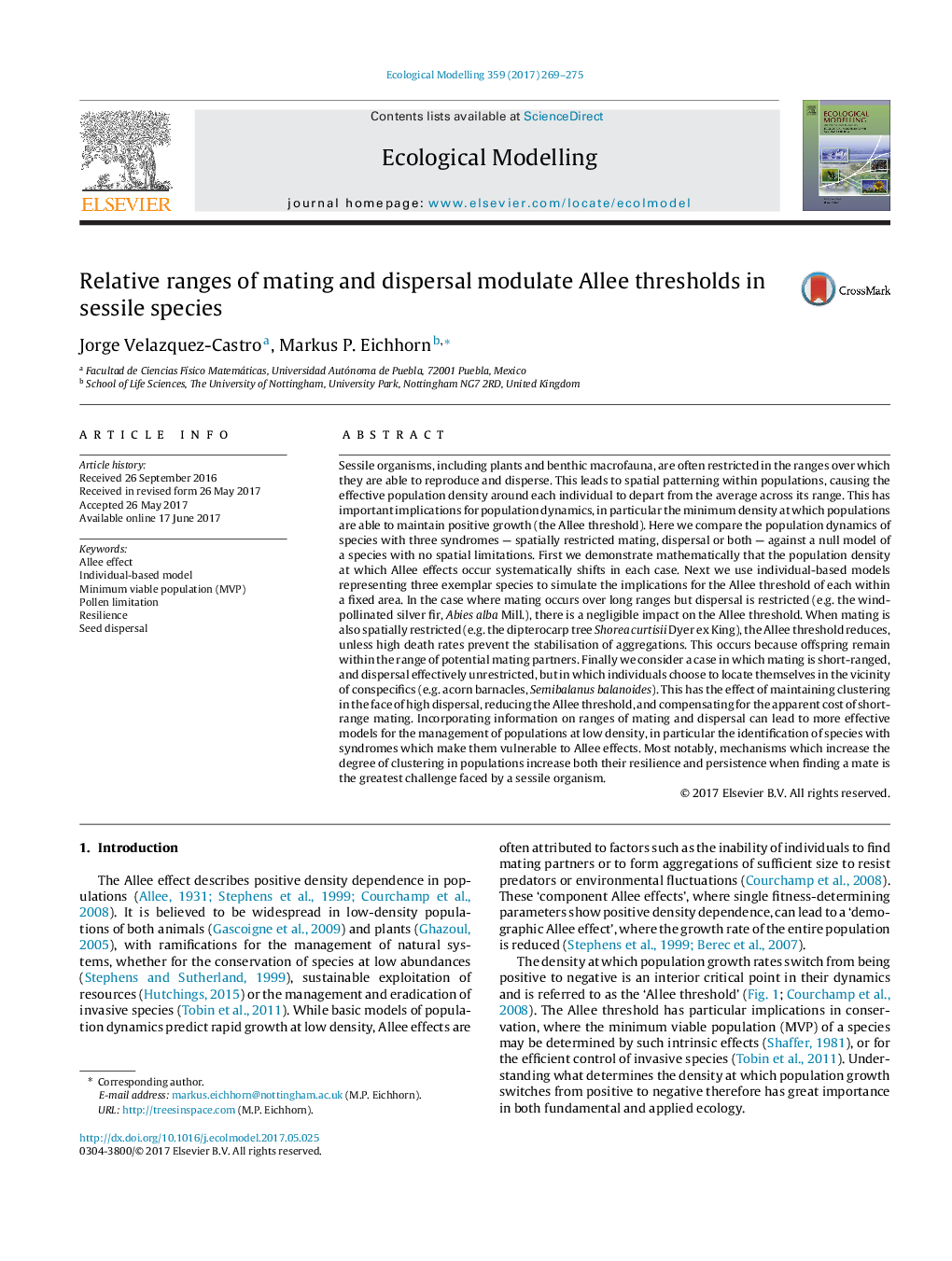| کد مقاله | کد نشریه | سال انتشار | مقاله انگلیسی | نسخه تمام متن |
|---|---|---|---|---|
| 5742138 | 1617388 | 2017 | 7 صفحه PDF | دانلود رایگان |
- Sessile organisms are often restricted in their ranges of mating and dispersal.
- The Allee threshold is the minimum density at which populations maintain growth.
- Allee thresholds are modified by the spatial patterning of individuals.
- When mating is localised, clustering increases population resilience and persistence.
- Incorporating spatial processes can improve management of populations at low density.
Sessile organisms, including plants and benthic macrofauna, are often restricted in the ranges over which they are able to reproduce and disperse. This leads to spatial patterning within populations, causing the effective population density around each individual to depart from the average across its range. This has important implications for population dynamics, in particular the minimum density at which populations are able to maintain positive growth (the Allee threshold). Here we compare the population dynamics of species with three syndromes - spatially restricted mating, dispersal or both - against a null model of a species with no spatial limitations. First we demonstrate mathematically that the population density at which Allee effects occur systematically shifts in each case. Next we use individual-based models representing three exemplar species to simulate the implications for the Allee threshold of each within a fixed area. In the case where mating occurs over long ranges but dispersal is restricted (e.g. the wind-pollinated silver fir, Abies alba Mill.), there is a negligible impact on the Allee threshold. When mating is also spatially restricted (e.g. the dipterocarp tree Shorea curtisii Dyer ex King), the Allee threshold reduces, unless high death rates prevent the stabilisation of aggregations. This occurs because offspring remain within the range of potential mating partners. Finally we consider a case in which mating is short-ranged, and dispersal effectively unrestricted, but in which individuals choose to locate themselves in the vicinity of conspecifics (e.g. acorn barnacles, Semibalanus balanoides). This has the effect of maintaining clustering in the face of high dispersal, reducing the Allee threshold, and compensating for the apparent cost of short-range mating. Incorporating information on ranges of mating and dispersal can lead to more effective models for the management of populations at low density, in particular the identification of species with syndromes which make them vulnerable to Allee effects. Most notably, mechanisms which increase the degree of clustering in populations increase both their resilience and persistence when finding a mate is the greatest challenge faced by a sessile organism.
Journal: Ecological Modelling - Volume 359, 10 September 2017, Pages 269-275
